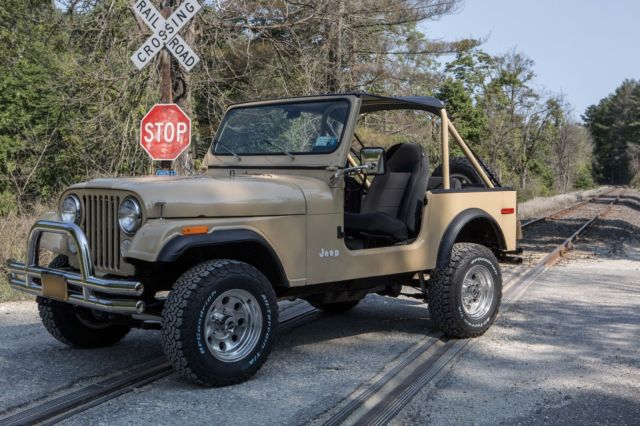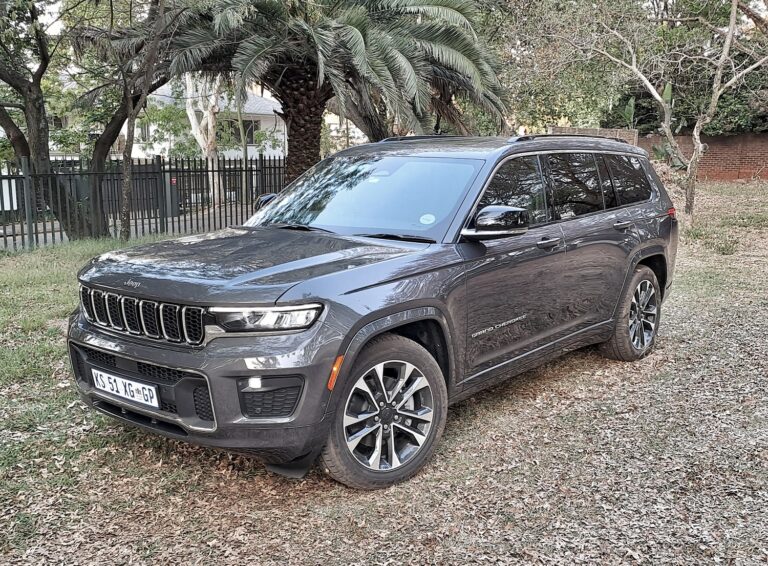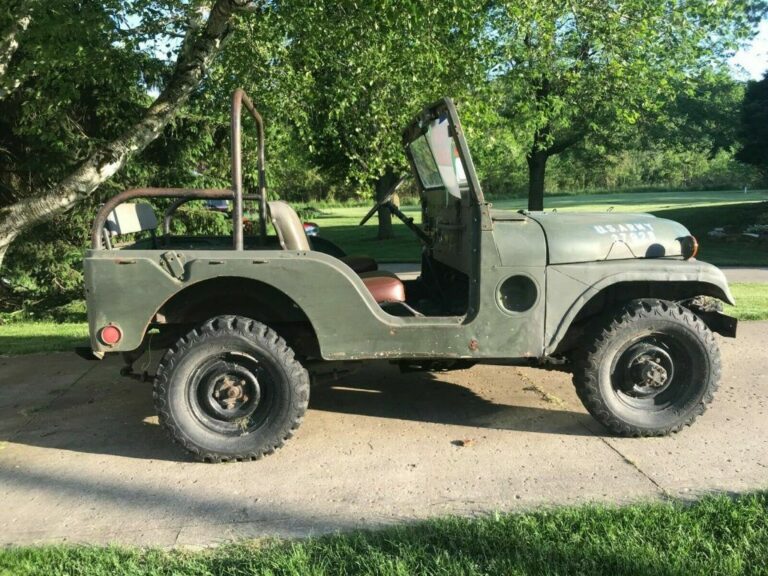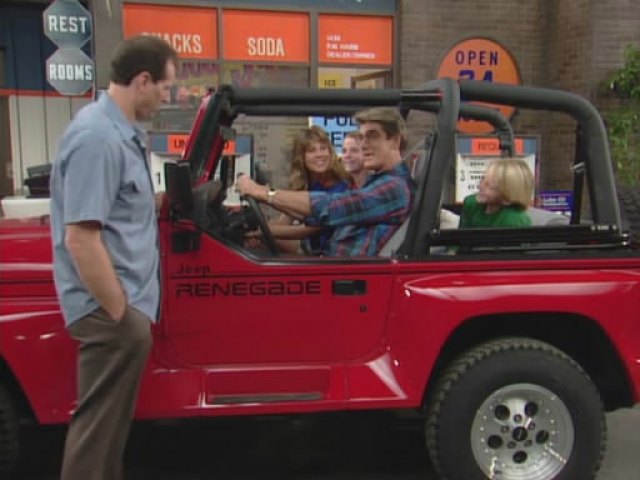1976 Jeep CJ7 For Sale: Your Ultimate Buyer’s Guide
1976 Jeep CJ7 For Sale: Your Ultimate Buyer’s Guide jeeps.truckstrend.com
Introduction: The Enduring Appeal of the 1976 Jeep CJ7
The very mention of "Jeep CJ7" evokes images of rugged freedom, off-road prowess, and classic American design. Among the many iterations of this iconic vehicle, the 1976 Jeep CJ7 holds a special place in the hearts of enthusiasts and collectors alike. As the inaugural year for the longer-wheelbase CJ7, it marked a significant evolution from its CJ5 predecessor, offering improved ride comfort and stability without sacrificing its legendary off-road capabilities. For anyone searching for a "1976 Jeep CJ7 For Sale," they are not merely looking for a vehicle; they are seeking a piece of automotive history, a blank canvas for adventure, or a meticulously restored testament to a bygone era. This comprehensive guide aims to equip prospective buyers with the knowledge, insights, and practical advice needed to navigate the market and secure their ideal 1976 CJ7.
1976 Jeep CJ7 For Sale: Your Ultimate Buyer’s Guide
A Glimpse into History: What Makes the 1976 CJ7 Unique?
The Jeep CJ (Civilian Jeep) series traces its roots back to the military Willys MB, becoming the quintessential American off-road vehicle. The CJ7, introduced in 1976, was a pivotal moment in this lineage. While retaining the iconic open-top, flat-fendered look, it boasted a 10-inch longer wheelbase (93.5 inches) than the CJ5. This seemingly small change dramatically improved the ride quality and allowed for the installation of an automatic transmission, making it more appealing to a broader audience.
The 1976 model year, in particular, is unique because it was the first of its kind, often featuring combinations of components that would change in later years. Engine options typically included the durable 232 or 258 cubic inch AMC inline-six and the powerful 304 cubic inch AMC V8. Transmission choices varied from the T-150 (3-speed manual) to the venerable T-18 (4-speed manual) and the optional TH400 automatic. Axles were commonly the Dana 30 front and AMC 20 rear, though some V8 models might have come with a Dana 44 rear. Being the first year, many early CJ7s represent a purer, less-modified form for those seeking originality, while others have been extensively customized, reflecting their owners’ adventurous spirits. Understanding this foundational year is crucial when evaluating a "1976 Jeep CJ7 For Sale."
Critical Inspection Points: What to Look for Before You Buy
When considering a 1976 Jeep CJ7 for sale, a thorough inspection is paramount. These vehicles are nearly five decades old, and their condition can vary wildly from meticulously maintained showpieces to neglected rust buckets.
- Rust, Rust, Rust: This is the single biggest enemy of the vintage CJ7.
- Frame: Inspect the frame rails meticulously, especially where the body mounts, near the spring hangers, and behind the front wheels. Look for flaking, perforations, or shoddy patch repairs. A compromised frame is a deal-breaker unless you plan a full frame-off restoration.
- Body Tub: Pay close attention to the floorboards (especially under the seats and footwells), rocker panels, wheel wells, and tailgate. The rear corners are notorious rust traps. Fiberglass body tubs are an option for heavily rusted steel bodies, but they deviate from originality.
- Fenders and Hood: Check around the headlight buckets and fender wells.
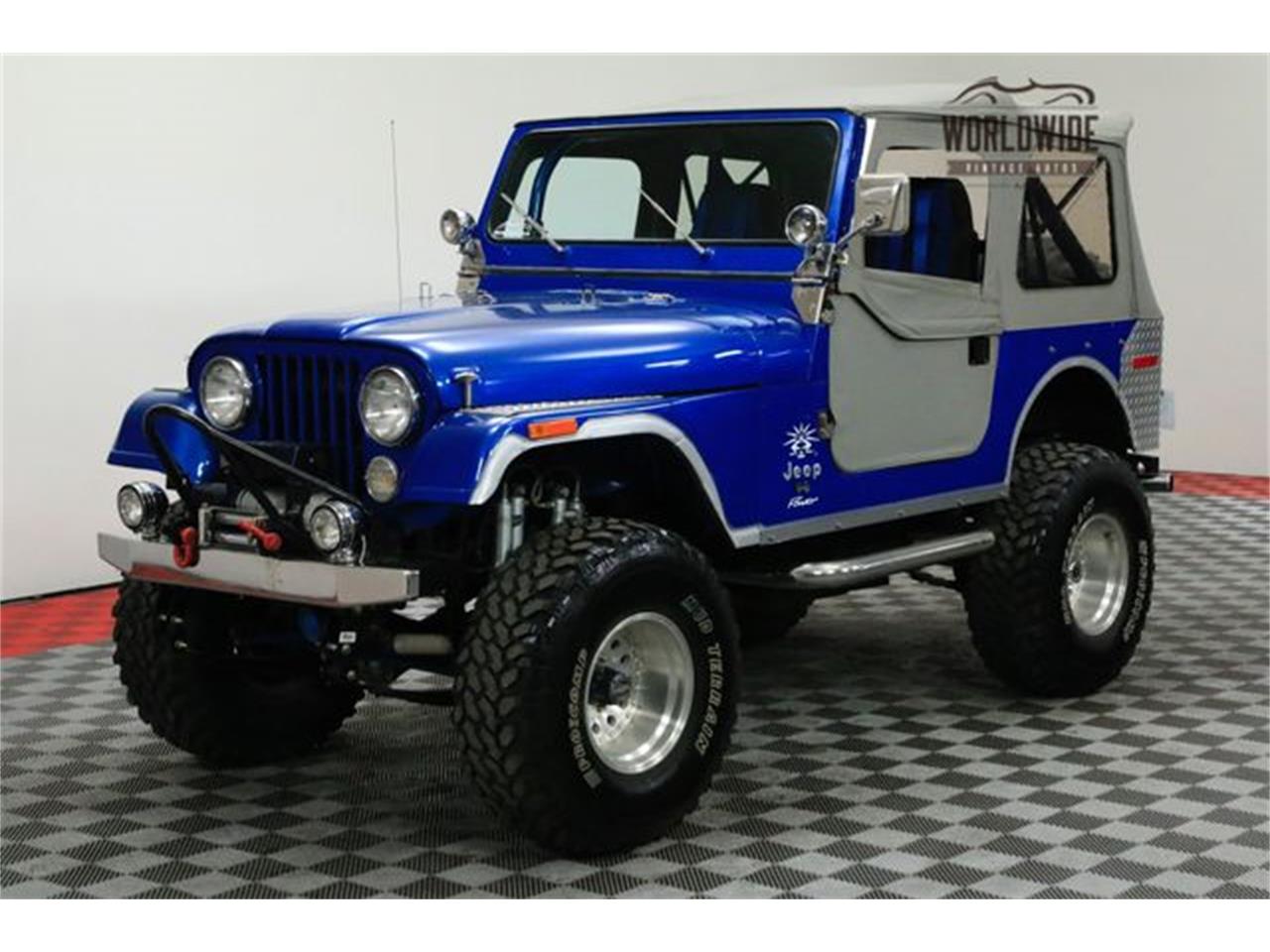
- Engine and Drivetrain:
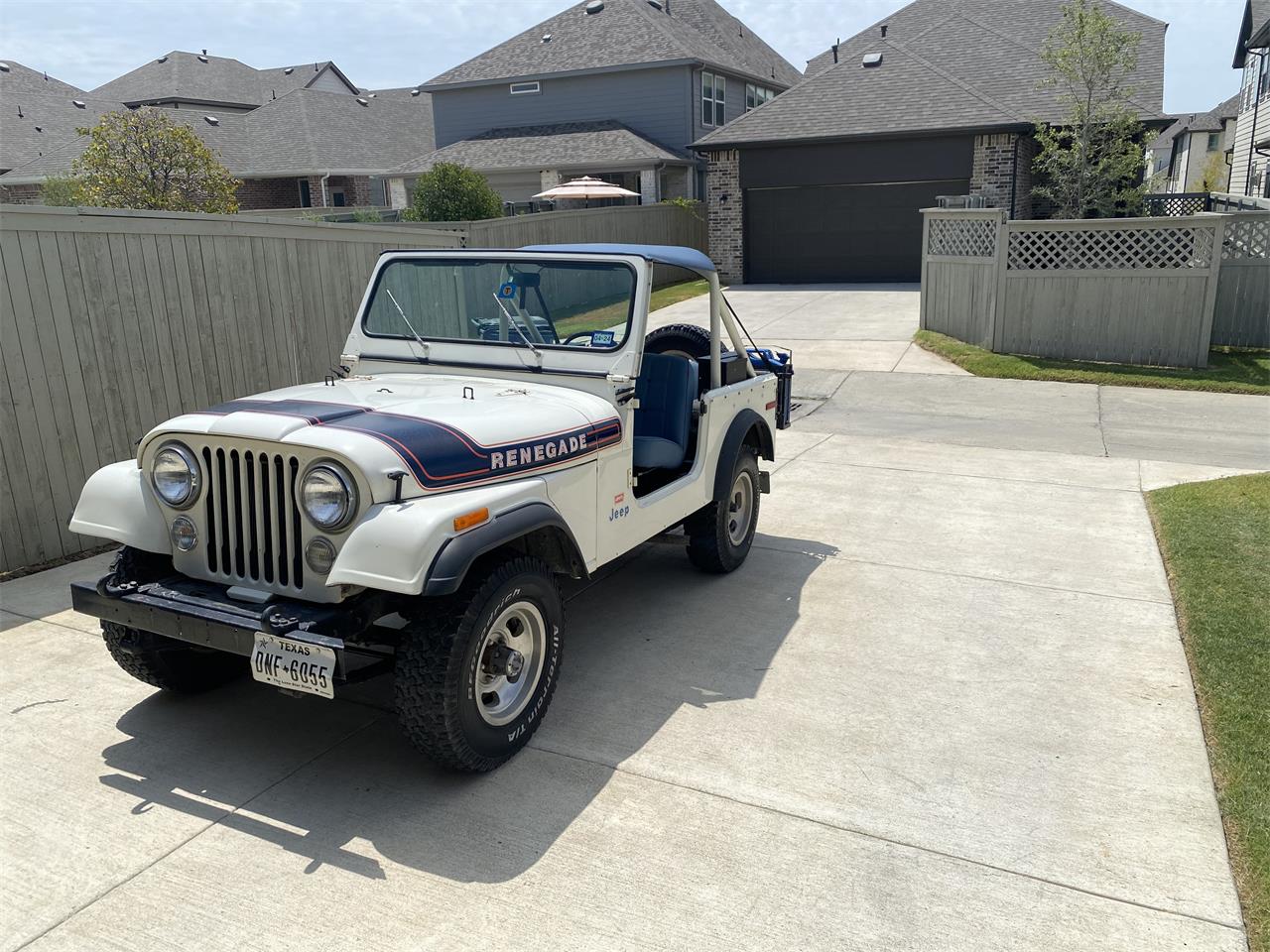
- Engine: Listen for unusual noises (knocks, taps), check for leaks (oil, coolant), and observe exhaust smoke (blue for oil, white for coolant). A well-maintained 258 I6 is a reliable workhorse. The 304 V8 offers more power but can be thirstier.
- Transmission: Test all gears, ensuring smooth shifts. Manuals should not grind excessively. Automatics should engage crisply.
- Transfer Case (Dana 20 or Dana 300): Engage 4-high and 4-low. Listen for grinding or clunking. Ensure the linkage operates smoothly.
- Axles: Check for leaks around the differential covers and axle seals. Listen for humming or clunking during a test drive, which could indicate worn gears or bearings.
- Suspension and Steering:
- Springs and Shocks: Look for saggy springs or leaking shocks.
- Steering: Check for excessive play in the steering wheel. Inspect the tie rods, drag link, and steering box for looseness or leaks. Power steering was optional in ’76 and is a desirable upgrade.
- Electrical System: Test all lights (headlights, tail lights, turn signals, brake lights), gauges, wipers, and heater fan. Old wiring can be brittle and prone to shorts.
- Interior and Accessories: Check seat condition, dashboard integrity, and the functionality of any aftermarket accessories. Confirm the soft top or hardtop (if included) is in good condition.
Practical Advice: Always arrange for a pre-purchase inspection by a trusted mechanic familiar with classic Jeeps. Their trained eye can spot issues you might miss, saving you significant money and headaches down the line.
Understanding the Market: Condition, Modifications, and Value Drivers
The price of a 1976 Jeep CJ7 for sale can fluctuate wildly based on several key factors:
- Condition: This is the primary determinant. A fully restored, show-quality CJ7 will command top dollar, while a rolling chassis or a heavily rusted project will be at the lower end.
- Originality: Highly original, unmolested examples often fetch a premium, especially if they retain their factory drivetrain and rare options.
- Modifications: Well-executed, tasteful modifications (e.g., modern fuel injection, disc brake conversions, upgraded suspension) can increase value for some buyers. However, poorly done or extreme modifications can deter others. Be wary of "lifted to the sky" Jeeps that may have compromised steering or suspension geometry.
- Engine: V8-equipped models often command higher prices due to their power and desirability. The 258 I6 is a strong second for its reliability.
- Documentation: A comprehensive history, including service records, restoration receipts, and original owner’s manuals, adds significant value and peace of mind.
- Location: Prices can vary regionally based on demand and climate (e.g., dry climates generally preserve vehicles better).
Actionable Insight: Define your purpose for buying. Are you looking for a daily driver, a weekend cruiser, an off-road beast, or a restoration project? Your budget and desired outcome will dictate what condition and price range you should target. Don’t overpay for a "project" that ends up costing more than a finished vehicle.
Navigating the Purchase: Tips for a Successful Transaction
Finding the right 1976 Jeep CJ7 for sale involves more than just a quick search.
- Set a Realistic Budget: Beyond the purchase price, factor in costs for potential repairs, maintenance, insurance, and possibly upgrades or restoration work.
- Where to Look:
- Online Marketplaces: Websites like eBay Motors, Hemmings, Bring a Trailer, Craigslist, and dedicated classic Jeep forums/Facebook groups are excellent starting points.
- Classic Car Dealers: Reputable dealers specializing in classic vehicles may have well-vetted and often higher-quality examples, but typically with a higher price tag.
- Local Classifieds and Auctions: Don’t overlook local ads or smaller regional auctions, which can sometimes yield hidden gems.
- Word of Mouth: Network with local Jeep clubs and enthusiasts; often, the best vehicles are sold within the community.
- Ask Detailed Questions: Before even seeing the Jeep, inquire about:
- Its history (number of owners, accident history, where it’s been stored).
- Maintenance records.
- Known issues or quirks.
- Any modifications and who performed them.
- Why the owner is selling.
- Test Drive:
- Drive on various road types if possible (city, highway, bumpy roads).
- Test brakes thoroughly (do they pull to one side?).
- Listen for unusual noises from the engine, transmission, and drivetrain.
- Check steering response and excessive play.
- Ensure all lights and gauges function.
- Paperwork: Verify the title is clean and matches the VIN on the vehicle. Be wary of missing titles or salvage titles.
Beyond the Sale: Ownership, Maintenance, and Potential Upgrades
Owning a classic 1976 Jeep CJ7 is a rewarding experience, but it comes with its own set of responsibilities.
- Routine Maintenance: Older vehicles require consistent attention. Regular oil changes, fluid checks, grease points, and inspecting belts/hoses are crucial. Stay on top of rust prevention by keeping the vehicle clean and dry.
- Parts Availability: Fortunately, the CJ7 benefits from a robust aftermarket and a passionate community. Most mechanical and body parts are readily available, either as new reproductions or used originals. Specialty parts for the ’76 model might require a bit more searching.
- Common Upgrades: Many owners choose to enhance their CJ7s for safety, performance, or comfort:
- Disc Brake Conversion: A popular upgrade for improved stopping power.
- Power Steering: Makes low-speed maneuvering significantly easier.
- Fuel Injection Conversion: Replaces the carburetor for better cold starts, fuel economy, and reliability.
- Suspension Lifts: Common for off-road enthusiasts, but choose quality components and professional installation.
- Modern Seats: For improved comfort on longer drives.
- Roll Cage: An essential safety upgrade, especially for off-road use.
Owning a 1976 CJ7 is a journey, not just a destination. Be prepared to learn, tinker, and embrace the quirks of a vintage vehicle.
The Price of Adventure: A Comprehensive Value Guide
The market for a 1976 Jeep CJ7 for sale is dynamic. The following table provides a general price range based on condition, but actual prices will vary based on specific features, location, and seller motivation.
| Condition Category | Price Range (USD) | Key Characteristics |
|---|---|---|
| Project/Parts | $3,000 – $8,000 | Significant rust, non-running engine, major mechanical issues, incomplete, requires full restoration or is a parts donor. |
| Rough Driver | $8,000 – $15,000 | Running and driving but needs extensive work (bodywork, mechanical repairs, safety items), visible rust, worn interior. |
| Good Driver | $15,000 – $25,000 | Solid frame, minimal rust (surface only), reliable runner, may have some cosmetic flaws, minor mechanical issues, decent interior. |
| Well-Maintained | $25,000 – $35,000 | Excellent running condition, minimal to no rust, good paint, solid interior, well-documented maintenance, possibly some tasteful upgrades. |
| Restored/Show | $35,000 – $60,000+ | Frame-off restoration, near-perfect condition, original or period-correct parts, show-quality paint and interior, potentially rare options. |
Note: Prices are estimates and can fluctuate based on market demand, specific engine/transmission, and unique features.
Frequently Asked Questions (FAQ)
Q1: Is the 1976 CJ7 a good first classic car?
A1: Yes, it can be. Parts are relatively easy to find, the mechanics are straightforward, and there’s a huge community for support. However, be prepared for potential rust issues and the need for regular maintenance.
Q2: What are the most common rust spots on a 1976 CJ7?
A2: The frame (especially near body mounts and spring hangers), floorboards, rocker panels, rear corners of the body tub, and around the windshield frame are primary rust areas.
Q3: Are parts hard to find for a 1976 CJ7?
A3: Generally, no. Thanks to a strong aftermarket and a dedicated enthusiast base, most mechanical and body parts are readily available. Some specific ’76-only trim pieces might be harder to source, but core components are common.
Q4: Can I daily drive a 1976 CJ7?
A4: While possible, it’s not ideal for everyone. They lack modern safety features, can be noisy, have a rougher ride than modern vehicles, and typically get poor fuel economy. Many owners use them as weekend cruisers or off-roaders.
Q5: What’s the difference between the ’76 and later CJ7s?
A5: The ’76 was the first year, so it often has unique early production features. Later CJ7s saw changes in engine options (e.g., introduction of the "Iron Duke" 4-cylinder), axle types (e.g., wider track axles later on), and interior/exterior trim. The ’76 models are often sought after for their early, more traditional CJ aesthetics.
Q6: What engine is best for a 1976 CJ7?
A6: The 258 cubic inch inline-six is highly regarded for its reliability, torque, and ease of maintenance. The 304 V8 offers more horsepower and a classic V8 rumble but typically consumes more fuel. The "best" depends on your priorities (reliability vs. power).
Q7: How much does it cost to restore a 1976 CJ7?
A7: A full, professional frame-off restoration can easily cost anywhere from $20,000 to $50,000+, depending on the starting condition and desired level of originality/perfection. DIY restorations can be cheaper but require significant time, skill, and tools.
Conclusion
The pursuit of a "1976 Jeep CJ7 For Sale" is an exciting journey into the world of classic off-roading. These vehicles represent a unique blend of heritage, utility, and timeless design that continues to captivate enthusiasts. By understanding its historical significance, knowing what critical areas to inspect, and navigating the market with a clear strategy, prospective buyers can make an informed decision. Whether you envision a rugged trail warrior, a meticulously restored showpiece, or a charming weekend cruiser, the 1976 CJ7 offers a rewarding ownership experience. Approach the purchase with patience, thorough research, and a realistic budget, and you’ll soon be enjoying the open-air freedom that only a vintage Jeep CJ7 can provide. The adventure truly begins when you turn the key.
